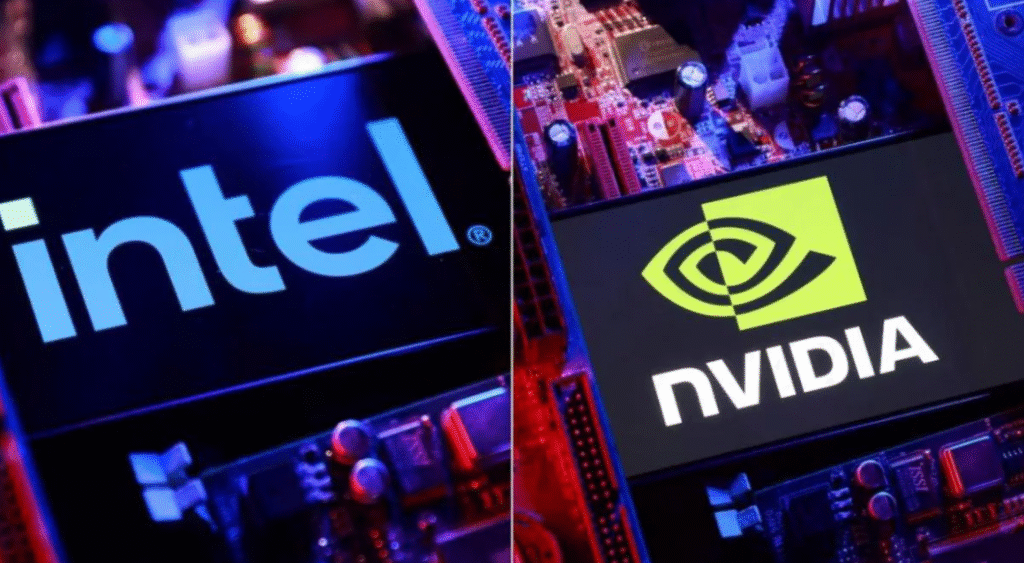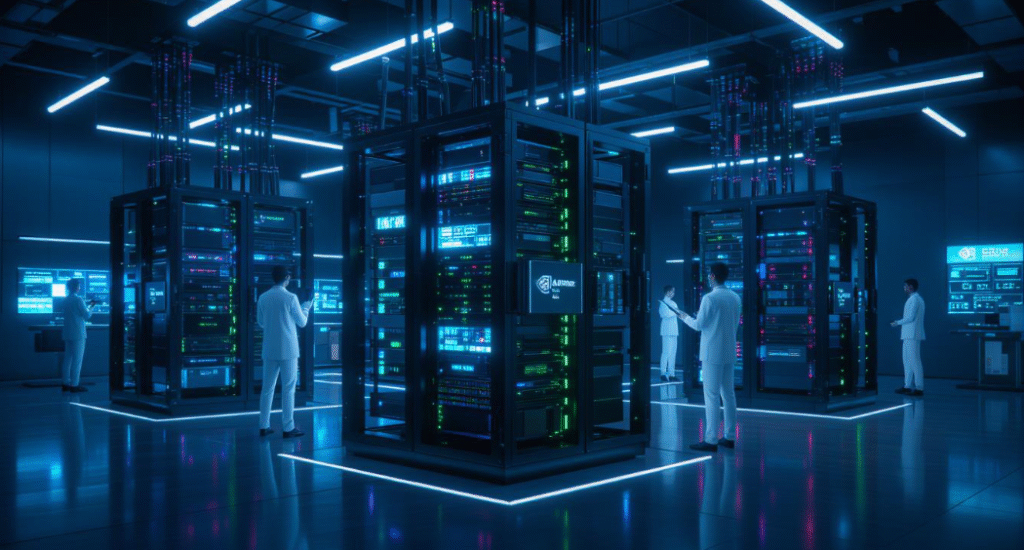Nvidia recently announced it will invest $5 billion in Intel by purchasing common stock making Nvidia one of Intel’s largest shareholders with about a 4 percent stake. This move comes at a crucial time: Intel has faced several years of financial and competitive challenges, while Nvidia rides high on surging demand for AI, graphics, and data-center chips. The deal triggered a roughly 23 percent jump in Intel’s share price, signaling the market’s view of the agreement as a much-needed vote of confidence.
Co-Development Plan CPUs, GPUs and AI-Integrated Hardware
Beyond simply buying shares, the deal includes a deep technical cooperation. Intel will build custom CPUs for Nvidia’s AI infrastructure, and for consumer PCs, Intel will develop system-on-chip products that integrate Nvidia GPU chiplets.

The two firms plan to connect their architectures using Nvidia’s NVLink technology, which promises high-speed communication between Nvidia GPUs and Intel CPUs. This integration suggests future PCs and servers will increasingly rely on combined CPU-GPU systems, rather than seeing these elements operate independently.
Reinforcing Intel’s Foundry Technology and Manufacturing Ambitions
Intel has been trying to revamp its manufacturing side its foundry business, which competes with big foundries like TSMC. As part of this new deal, Intel will supply processors and handle advanced packaging for Nvidia products; though Nvidia hasn’t committed to shift its primary chip manufacturing to Intel’s foundry just yet.
Nonetheless, this partnership strengthens Intel’s position in developing and scaling next-generation node technologies like the 14A process planned for 2027 by boosting production volumes and customer confidence.
What Nvidia Gains AI Infrastructure, Ecosystem Reach, and Competitive Edge
For Nvidia, this deal does more than just diversify its investment portfolio. It gives Nvidia closer access to CPU technologies and manufacturing capabilities that complement its GPU-based AI stack. By integrating its AI GPUs with Intel CPUs via Intel’s x86 ecosystem, Nvidia can offer more complete solutions to customers in areas like data centers and AI workloads.

It also potentially helps Nvidia reduce supply chain dependence and align more tightly with the broader computing ecosystem.
Even with its promise, the deal carries risks. Intel must prove it can scale its foundry operations efficiently, maintain cost discipline, and upgrade manufacturing processes to meet future node standards. There’s also the challenge of blending product lines: designing and producing CPU-GPU combos with consistent performance and reliability isn’t trivial.
Strategic Implications for the Global Chip Industry
This investment and partnership come at a time when many governments are prioritizing semiconductor sovereignty, supply-chain resilience, and AI capability. Intel’s revival will appeal to U.S. strategic policy goals, especially given recent government investment and oversight involvement.
Customers might soon expect CPUs and GPUs designed to work together, rather than being bought separately from different manufacturers. The Nvidia-Intel pact may thus reshape how future PCs, servers, and AI infrastructure get built, sold, and deployed
Nvidia’s $5 billion stake in Intel marks more than just a financial investment it signals growth, cooperation, and perhaps the start of Intel’s turnaround. If both companies deliver on their promises custom chips, integrations via NVLink, improved manufacturing output—it could reshape competition in AI and semiconductor manufacturing.


 Nvidia joins development of successor to Japan’s Fugaku
Nvidia joins development of successor to Japan’s Fugaku  What Trump’s Intel move says about his stance on US firms
What Trump’s Intel move says about his stance on US firms  SoftBank to Invest $2 Billion in Intel as Shares Surge
SoftBank to Invest $2 Billion in Intel as Shares Surge  U.S. Bans Nvidia H20 Chip Sales to China
U.S. Bans Nvidia H20 Chip Sales to China